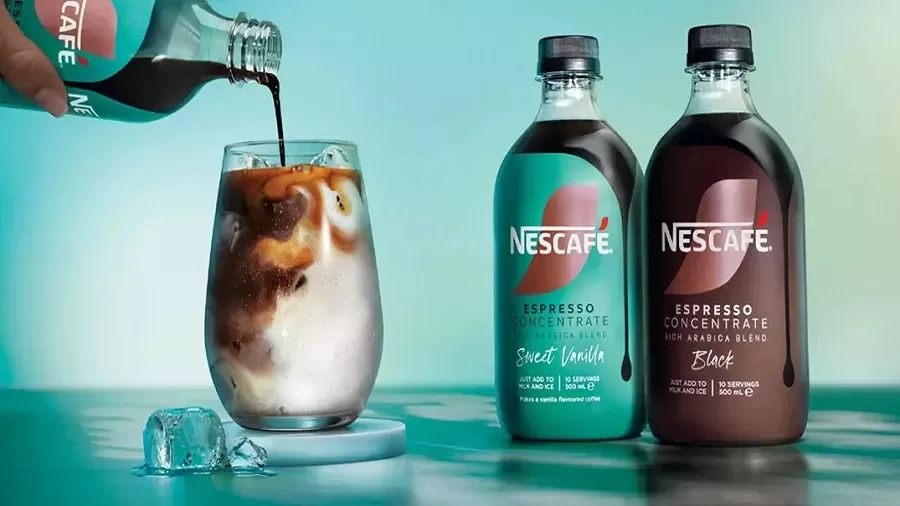Food & Beverage
A Growing Trend of At-Home Iced Coffee

- Keurig and Nestlé are leading the charge in developing at-home iced coffee solutions to match café-quality drinks, responding to growing consumer demand.
- Despite challenges such as weaker brews and rising coffee prices, cold coffee consumption continues to rise, driven by Gen Z preferences.
- The café-at-home trend reflects a shift towards premium, versatile coffee experiences, allowing consumers to enjoy high-quality beverages without leaving home.
Iced coffee, once a café-only treat, has become a global favourite among coffee lovers. However, recreating that perfect barista-made iced coffee at home often falls short—resulting in watery, bitter brews that lack the richness of café-quality drinks. This gap in quality has driven companies like Nestlé and Keurig to develop innovative solutions aimed at bringing premium iced coffee to the home experience.
Innovations in Home Iced Coffee Machines
Keurig Dr Pepper has launched the K-Produce+Chill, a device that makes iced coffee in under three minutes, priced at £199. It uses advanced technology to preserve the flavour while preventing ice from diluting the drink. Meanwhile, Nestlé has rolled out several new products, including espresso concentrates for iced beverages, Starbucks iced coffee mixes, canned cold brews, and even Coffee-mate cold foams.
These innovations address the growing consumer demand for café-quality drinks at home. As people seek to cut costs, many are transforming their kitchens into personal coffee bars, opting for premium coffee experiences over regular café visits.
Challenges of Brewing Café-Quality Iced Coffee
Despite advancements in homebrewing technology, experts argue that at-home machines still struggle to replicate the depth and richness of café-made iced coffee. While capsule machines offer convenience, they typically use less coffee than traditional café methods, leading to weaker brews. Additionally, the quick brew times of these machines are in stark contrast to the slow, overnight steeping process of cold brew, which enhances flavour and reduces bitterness.
The Iced Coffee Boom and Rising Coffee Costs
The surge in iced coffee’s popularity comes at a time when coffee prices are at a 13-year high, driven by climate change and supply chain disruptions. Despite these challenges, investing in iced coffee remains a strategic move for brands.
For Nestlé, coffee has been a significant growth driver, with cold coffee emerging as a standout category. The growing preference for iced coffee, particularly among younger consumers like Generation Z, presents a lucrative opportunity for companies to tap into this expanding market.
Café-at-Home Culture and Gen Z’s Influence
The café-at-home trend is gaining momentum, especially among younger consumers who value personalisation and innovation in their food and beverage choices. For many, creating unique coffee drinks has become a form of self-expression. Cold coffee is no longer just a morning ritual—it has evolved into a versatile and enjoyable experience.
Reports indicate that one in three coffee cups consumed globally is now cold, with Generation Z playing a key role in driving this trend. To effectively engage this demographic, marketers must adapt their products and strategies to meet Gen Z’s demand for convenience and variety.
Balancing Innovation with Consumer Expectations
While companies like Keurig and Nestlé are making strides, user feedback indicates room for improvement. Early reviews of the K-Brew+Chill highlight concerns with the brewing process, particularly the need for clearer instructions and enhanced performance.
Despite these challenges, the market potential for iced coffee innovations remains vast. With nearly a quarter of Americans preferring cold coffee and similar trends emerging in the UK, the demand for high-quality at-home iced coffee is set to continue growing.
The Future of At-Home Iced Coffee: Innovation and Opportunity
As iced coffee continues to transform global coffee culture, the race to enhance at-home brewing options intensifies. While companies have made significant progress, bridging the quality gap between home brewing and coffee shop creations will be crucial to capturing the loyalty of café enthusiasts. With innovation, sustainability, and affordability driving the industry forward, the future of iced coffee looks both exciting and refreshing.



















































